+ Open data
Open data
- Basic information
Basic information
| Entry | Database: PDB / ID: 6hwj | ||||||
|---|---|---|---|---|---|---|---|
| Title | Glucosamine kinase (crystal form A) | ||||||
 Components Components | Glucosamine kinase | ||||||
 Keywords Keywords | TRANSFERASE / Glucosamine kinase | ||||||
| Function / homology |  Function and homology information Function and homology informationglucosamine kinase / glucosamine kinase activity / carbohydrate metabolic process / magnesium ion binding / ATP binding Similarity search - Function | ||||||
| Biological species |  Streptacidiphilus jiangxiensis (bacteria) Streptacidiphilus jiangxiensis (bacteria) | ||||||
| Method |  X-RAY DIFFRACTION / X-RAY DIFFRACTION /  SYNCHROTRON / SYNCHROTRON /  MOLECULAR REPLACEMENT / Resolution: 1.979 Å MOLECULAR REPLACEMENT / Resolution: 1.979 Å | ||||||
 Authors Authors | Manso, J.A. / Pereira, P.J.B. | ||||||
 Citation Citation |  Journal: mBio / Year: 2019 Journal: mBio / Year: 2019Title: Molecular Fingerprints for a Novel Enzyme Family in with Glucosamine Kinase Activity. Authors: José A Manso / Daniela Nunes-Costa / Sandra Macedo-Ribeiro / Nuno Empadinhas / Pedro José Barbosa Pereira /  Abstract: have long been the main source of antibiotics, secondary metabolites with tightly controlled biosynthesis by environmental and physiological factors. Phosphorylation of exogenous glucosamine has ... have long been the main source of antibiotics, secondary metabolites with tightly controlled biosynthesis by environmental and physiological factors. Phosphorylation of exogenous glucosamine has been suggested as a mechanism for incorporation of this extracellular material into secondary metabolite biosynthesis, but experimental evidence of specific glucosamine kinases in is lacking. Here, we present the molecular fingerprints for the identification of a unique family of actinobacterial glucosamine kinases. Structural and biochemical studies on a distinctive kinase from the soil bacterium unveiled its preference for glucosamine and provided structural evidence of a phosphoryl transfer to this substrate. Conservation of glucosamine-contacting residues across a large number of uncharacterized actinobacterial proteins unveiled a specific glucosamine binding sequence motif. This family of kinases and their genetic context may represent the missing link for the incorporation of environmental glucosamine into the antibiotic biosynthesis pathways in and can be explored to enhance antibiotic production. The discovery of novel enzymes involved in antibiotic biosynthesis pathways is currently a topic of utmost importance. The high levels of antibiotic resistance detected worldwide threaten our ability to combat infections and other 20th-century medical achievements, namely, organ transplantation or cancer chemotherapy. We have identified and characterized a unique family of enzymes capable of phosphorylating glucosamine to glucosamine-6-phosphate, a crucial molecule directly involved in the activation of antibiotic production pathways in , nature's main source of antimicrobials. The consensus sequence identified for these glucosamine kinases will help establish a molecular fingerprint to reveal yet-uncharacterized sequences in antibiotic producers, which should have an important impact in biotechnological and biomedical applications, including the enhancement and optimization of antibiotic production. | ||||||
| History |
|
- Structure visualization
Structure visualization
| Structure viewer | Molecule:  Molmil Molmil Jmol/JSmol Jmol/JSmol |
|---|
- Downloads & links
Downloads & links
- Download
Download
| PDBx/mmCIF format |  6hwj.cif.gz 6hwj.cif.gz | 467.7 KB | Display |  PDBx/mmCIF format PDBx/mmCIF format |
|---|---|---|---|---|
| PDB format |  pdb6hwj.ent.gz pdb6hwj.ent.gz | 392.3 KB | Display |  PDB format PDB format |
| PDBx/mmJSON format |  6hwj.json.gz 6hwj.json.gz | Tree view |  PDBx/mmJSON format PDBx/mmJSON format | |
| Others |  Other downloads Other downloads |
-Validation report
| Summary document |  6hwj_validation.pdf.gz 6hwj_validation.pdf.gz | 464.2 KB | Display |  wwPDB validaton report wwPDB validaton report |
|---|---|---|---|---|
| Full document |  6hwj_full_validation.pdf.gz 6hwj_full_validation.pdf.gz | 472.2 KB | Display | |
| Data in XML |  6hwj_validation.xml.gz 6hwj_validation.xml.gz | 34.1 KB | Display | |
| Data in CIF |  6hwj_validation.cif.gz 6hwj_validation.cif.gz | 50.4 KB | Display | |
| Arichive directory |  https://data.pdbj.org/pub/pdb/validation_reports/hw/6hwj https://data.pdbj.org/pub/pdb/validation_reports/hw/6hwj ftp://data.pdbj.org/pub/pdb/validation_reports/hw/6hwj ftp://data.pdbj.org/pub/pdb/validation_reports/hw/6hwj | HTTPS FTP |
-Related structure data
| Related structure data | 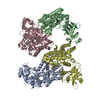 6hwkC 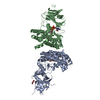 6hwlC 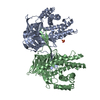 4o7oS  4u94S C: citing same article ( S: Starting model for refinement |
|---|---|
| Similar structure data | |
| Experimental dataset #1 | Data reference:  10.15785/SBGRID/614 / Data set type: diffraction image data 10.15785/SBGRID/614 / Data set type: diffraction image data |
| Other databases |
- Links
Links
- Assembly
Assembly
| Deposited unit | 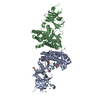
| ||||||||
|---|---|---|---|---|---|---|---|---|---|
| 1 | 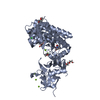
| ||||||||
| 2 | 
| ||||||||
| Unit cell |
|
- Components
Components
-Protein , 1 types, 2 molecules AB
| #1: Protein | Mass: 48308.703 Da / Num. of mol.: 2 Source method: isolated from a genetically manipulated source Source: (gene. exp.)  Streptacidiphilus jiangxiensis (bacteria) Streptacidiphilus jiangxiensis (bacteria)Gene: SAMN05414137_114149 / Production host:  |
|---|
-Non-polymers , 5 types, 480 molecules 

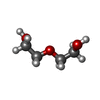






| #2: Chemical | ChemComp-MG / #3: Chemical | #4: Chemical | #5: Chemical | ChemComp-CL / #6: Water | ChemComp-HOH / | |
|---|
-Experimental details
-Experiment
| Experiment | Method:  X-RAY DIFFRACTION / Number of used crystals: 1 X-RAY DIFFRACTION / Number of used crystals: 1 |
|---|
- Sample preparation
Sample preparation
| Crystal | Density Matthews: 2.29 Å3/Da / Density % sol: 46.19 % |
|---|---|
| Crystal grow | Temperature: 293 K / Method: vapor diffusion, sitting drop Details: 100 mM Bis-Tris pH 6.1, 15% (wt/vol) PEG 3350, 0.2 M MgCl2 |
-Data collection
| Diffraction | Mean temperature: 100 K / Serial crystal experiment: N |
|---|---|
| Diffraction source | Source:  SYNCHROTRON / Site: SYNCHROTRON / Site:  ALBA ALBA  / Beamline: XALOC / Wavelength: 1.0332 Å / Beamline: XALOC / Wavelength: 1.0332 Å |
| Detector | Type: DECTRIS PILATUS 6M / Detector: PIXEL / Date: Oct 16, 2016 |
| Radiation | Protocol: SINGLE WAVELENGTH / Monochromatic (M) / Laue (L): M / Scattering type: x-ray |
| Radiation wavelength | Wavelength: 1.0332 Å / Relative weight: 1 |
| Reflection | Resolution: 1.979→40.736 Å / Num. obs: 59488 / % possible obs: 98.1 % / Redundancy: 3.5 % / Biso Wilson estimate: 34.2 Å2 / CC1/2: 0.999 / Rmerge(I) obs: 0.057 / Rpim(I) all: 0.036 / Rrim(I) all: 0.067 / Net I/σ(I): 13.2 |
| Reflection shell | Resolution: 1.98→2.01 Å / Redundancy: 3.6 % / Rmerge(I) obs: 0.908 / Mean I/σ(I) obs: 1.3 / Num. unique obs: 2936 / CC1/2: 0.584 / Rpim(I) all: 0.557 / Rrim(I) all: 1.067 / % possible all: 97.3 |
- Processing
Processing
| Software |
| |||||||||||||||||||||||||||||||||||||||||||||||||||||||||||||||||||||||||||||||||||||||||||||||||||||||||||||||||||||||||||||||||||||||||||||||||||||||||||||||||||||||||||||||
|---|---|---|---|---|---|---|---|---|---|---|---|---|---|---|---|---|---|---|---|---|---|---|---|---|---|---|---|---|---|---|---|---|---|---|---|---|---|---|---|---|---|---|---|---|---|---|---|---|---|---|---|---|---|---|---|---|---|---|---|---|---|---|---|---|---|---|---|---|---|---|---|---|---|---|---|---|---|---|---|---|---|---|---|---|---|---|---|---|---|---|---|---|---|---|---|---|---|---|---|---|---|---|---|---|---|---|---|---|---|---|---|---|---|---|---|---|---|---|---|---|---|---|---|---|---|---|---|---|---|---|---|---|---|---|---|---|---|---|---|---|---|---|---|---|---|---|---|---|---|---|---|---|---|---|---|---|---|---|---|---|---|---|---|---|---|---|---|---|---|---|---|---|---|---|---|---|
| Refinement | Method to determine structure:  MOLECULAR REPLACEMENT MOLECULAR REPLACEMENTStarting model: 4U94, 4O7O Resolution: 1.979→40.736 Å / SU ML: 0.2 / Cross valid method: FREE R-VALUE / σ(F): 1.35 / Phase error: 21.69
| |||||||||||||||||||||||||||||||||||||||||||||||||||||||||||||||||||||||||||||||||||||||||||||||||||||||||||||||||||||||||||||||||||||||||||||||||||||||||||||||||||||||||||||||
| Solvent computation | Shrinkage radii: 0.9 Å / VDW probe radii: 1.11 Å | |||||||||||||||||||||||||||||||||||||||||||||||||||||||||||||||||||||||||||||||||||||||||||||||||||||||||||||||||||||||||||||||||||||||||||||||||||||||||||||||||||||||||||||||
| Refinement step | Cycle: LAST / Resolution: 1.979→40.736 Å
| |||||||||||||||||||||||||||||||||||||||||||||||||||||||||||||||||||||||||||||||||||||||||||||||||||||||||||||||||||||||||||||||||||||||||||||||||||||||||||||||||||||||||||||||
| Refine LS restraints |
| |||||||||||||||||||||||||||||||||||||||||||||||||||||||||||||||||||||||||||||||||||||||||||||||||||||||||||||||||||||||||||||||||||||||||||||||||||||||||||||||||||||||||||||||
| LS refinement shell |
| |||||||||||||||||||||||||||||||||||||||||||||||||||||||||||||||||||||||||||||||||||||||||||||||||||||||||||||||||||||||||||||||||||||||||||||||||||||||||||||||||||||||||||||||
| Refinement TLS params. | Method: refined / Refine-ID: X-RAY DIFFRACTION
| |||||||||||||||||||||||||||||||||||||||||||||||||||||||||||||||||||||||||||||||||||||||||||||||||||||||||||||||||||||||||||||||||||||||||||||||||||||||||||||||||||||||||||||||
| Refinement TLS group |
|
 Movie
Movie Controller
Controller



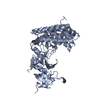
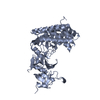
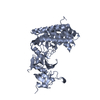
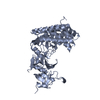
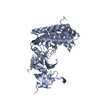
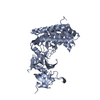






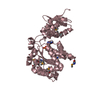
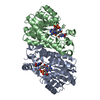
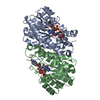
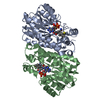
 PDBj
PDBj



